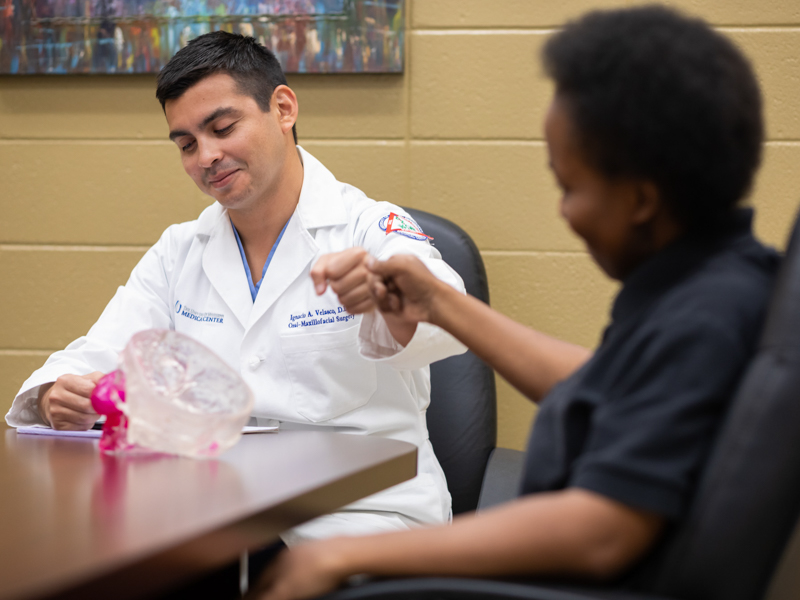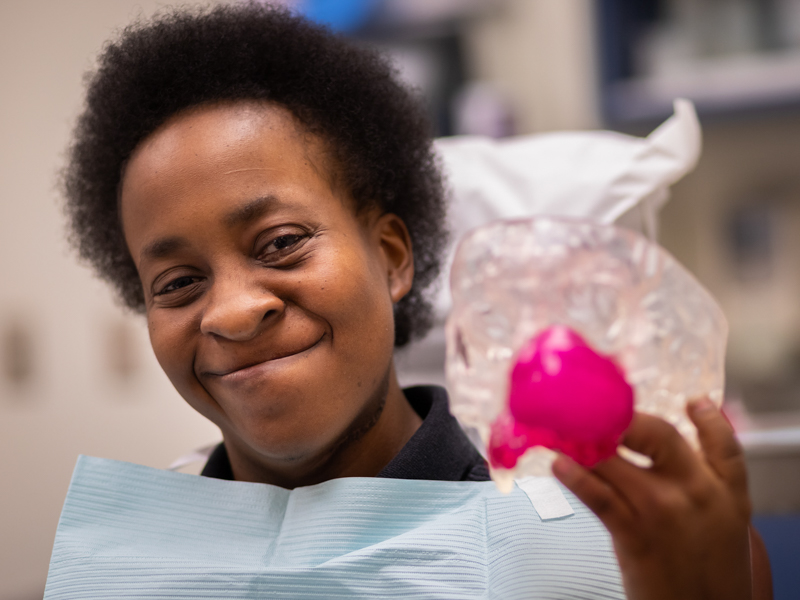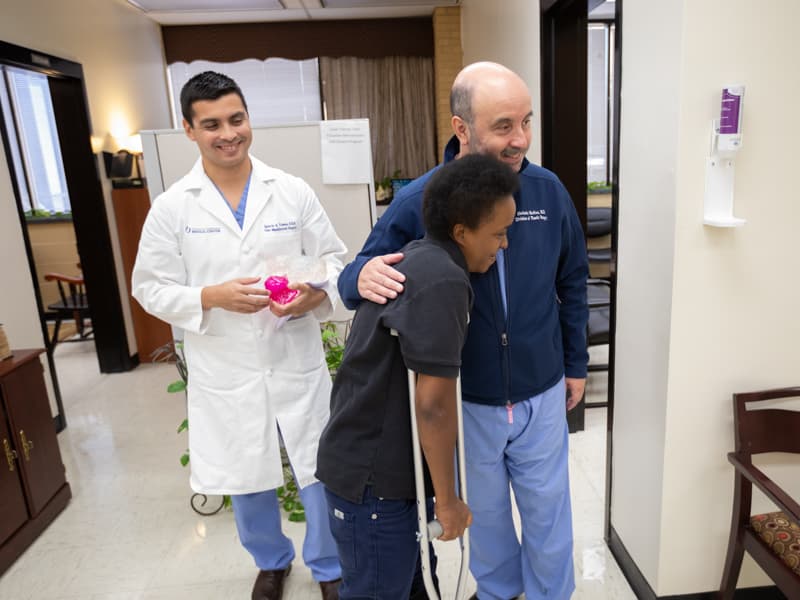Doctors perform medical 'first' during facial tumor surgery

Dr. Ignacio Velasco Martinez and Violet Thompson have a unique doctor-patient relationship. They regularly share a fist bump, and occasionally, a hug.
They’ve spent a lot of time together this year – including a 19-and-a-half-hour surgery in February to remove a benign but disfiguring tumor on the left side of Thompson’s face.
Twenty-eight-year-old Thompson, who lives in Raymond, has a bone disorder called fibrous dysplasia, a tumor-like condition characterized by replacement of normal bone with excessive fibrous tissue.
About eight years ago, while living in Louisiana, a routine visit to the dentist prompted a referral to an oral surgeon after a small spot in Thompson’s left jaw was detected. A biopsy was performed, and the results were benign – but the procedure prompted the tumor to begin growing.
Fast forward five years and Thompson, who had since moved to Mississippi after a stint in California, had a baseball-sized tumor jutting out of the left side of her face. The tumor was infringing on her teeth and breathing ability.

The disfiguring mass had physical and emotional effects.
“I couldn’t sleep on my left side,” she recalled. “Even giving a hug was uncomfortable.”
But perhaps most devastating was the emotional toll. Thompson, who had worked on service projects with children through AmeriCorps and City Year, stopped going out and began dreading routine outings to the grocery and clothing stores.
“People noticed it,” she said, describing how people would stare at the tumor. “Kids would look at me like I was a monster.”
In conversations she never made eye contact with others, but instead spoke with her head and eyes cast down.
A local dentist referred her to Velasco, an oral and maxillofacial surgeon who also works with head and neck cancers in the School of Dentistry at the University of Mississippi Medical Center.
He told Thompson of the potential consequences of not removing the tumor, including obstruction of her eyesight, hearing and possibly her ability to eat.
He warned her the recovery process would be long, totaling a year before her life returned to normal.
The surgery involved six surgeons, a host of specialized nurses, and what Velasco says was a first: the reconnection of a specific nerve in Thompson’s upper face.
In order to recreate the left portion of Thompson’s face after the tumor was removed, surgeons used and restructured part of her fibula. The removed portion of her fibula, along with the artery and vein that supplies it with oxygen, were brought up to the neck. Next, that artery and vein were connected with the arteries and veins in the neck.

Doctors used a cadaveric nerve, or a nerve transplanted from a donor, to connect the two cut ends of the nerve back together. The specific nerve is called the V2 nerve, a section of the trigeminal nerve that gives sensation to the upper part of the face.
Because the removal of the tumor required cutting the V2 nerve, surgeons faced a serious challenge: succeed in reconnecting the nerve or Thompson would lose sensation to that part of her face.
They successfully reconnected it using an allograft, or a cadaveric nerve supplied by Axogen, a company that creates technologies for nerve regeneration and repair. The reconnection of the V2 nerve has not yet been documented in medical literature before, Velasco said.
“It was the first time doing a big reconstruction using this nerve for this specific part of the face,” he said. “It’s the first time it will be reported.”
Thu Nguyen, a clinical specialist at Axogen, said this is the first time to his knowledge the allograft has been successfully used to repair this nerve.
Fast forward six months – past three weeks in the hospital, two months on a liquid diet, in-home care, physical therapy and recovery from a tracheostomy – and Thompson is recovering well. She wears a boot on her leg where the bone was removed and is still doing physical therapy to help with the rotation in her ankle.

Sensation is slowly returning to her face and leg. At first, she felt numbness, but little by little has a reaction when Velasco performs a nerve test, checking the sensation in each area.
Dr. Abelardo Medina, an assistant professor of surgery in the School of Medicine specializing in plastic surgery, said he expects Thompson’s leg to return to full functionality, and Velasco predicts the same for the sensation in her face.
The next step will be dental reconstruction, including dentures and implants, to replace teeth that were lost when the tumor was removed.
Thompson said even without a full set of teeth, her confidence has gone “through the roof” compared to before the surgery.
“Every month it gets better and better as long as I do what I have to do and keep the communication open with the doctors,” Thompson said.
Luckily, she finds Velasco and her other doctors great to work with – hence the fist bumping.
“The doctors are amazing, amazing, amazing. They really tended to me very well,” she said.


